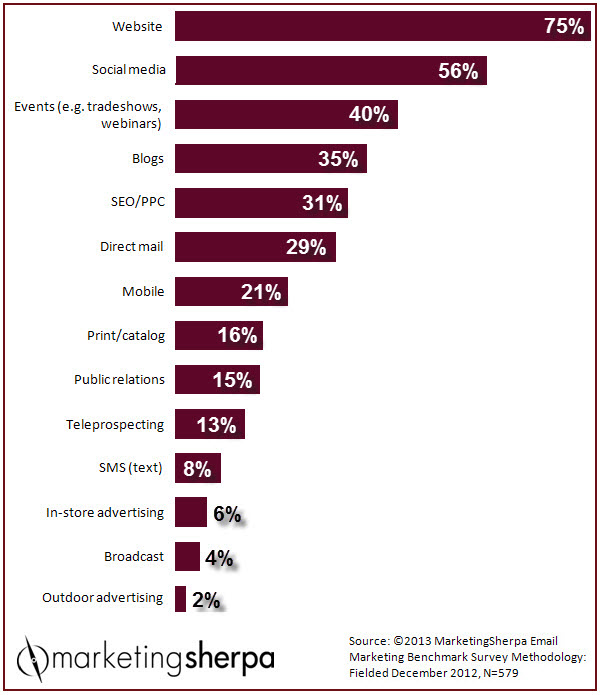Email Marketing: Only 21% of marketers integrating mobile with email
No marketing tactic is an island, so in the MarketingSherpa 2013 Email Marketing Benchmark Report, we asked marketers about which marketing channels they are integrating with their email marketing …
Q: Which marketing channels does your organization integrate with your email program? Select all that apply.
As usual, we asked your opinion of this research …
Mobile integration requires investment
A question is raised in the blog about the poor representation of mobile in email integration. That’s because the top two mediums hog up the highest share of the marketing budget, with the balance to the next three. Mobile integration requires new planning and visual strategy for which there is very little or no dollars left.
– Shailesh Merai, Creative Lead, Omesa Creative Studio
In the MarketingSherpa Chart of the Week article in which this chart originally appeared – “Marketing Research Chart: Marketing channel email integration” – Brad Bortone, Senior Research Editor, MECLABS, asked, “Are you surprised by how poorly mobile integration placed in this chart, when compared to other tactics?”
Shailesh chalks the reason up to investment, or lack thereof, in mobile. From his experience, most budget goes to the top two integrated tactics (75% of marketers integrate the website with email, 56% integrate social media with email).
According to Shailesh, the rest of the budget goes to the next three most integrated tactics with email – 40% of marketers integrate email with events (for example, tradeshows and webinars), 35% with blogs and 31% with search engine optimization and/or pay-per-click advertising.
This leaves only 21% of marketers integrating email with mobile.
To help you secure the budget and resources you need, here are a few articles to show your marketing and business leaders the benefits of mobile email integration, along with the challenges you need resources to overcome …
Mobile Email Marketing: 50% more app downloads from device-targeted ads
Email Marketing: 58% of marketers see mobile smartphones and tablets most impacting email
Mobile Marketing: 31% of marketers don’t know their mobile email open rate










